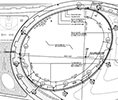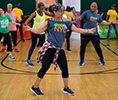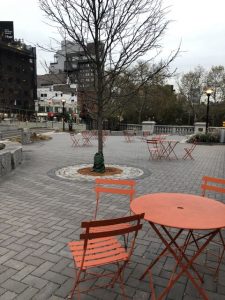
Sign the petition here.
From “The National Recycling Coalition (NRC) and over 150 organizations and individuals in signing on to a letter initiated by the Institute for Local Self-Reliance and Zero Waste USA asking President Biden and Vice President Harris to establish policies and programs for waste reduction, reuse, recycling and composting that will stem climate disruption, address racial justice, and create thousands of jobs throughout the country.
Asking “the Biden-Harris Administration to consider these items in a stimulus package, infrastructure bill, racial justice and/or climate change legislation..also sent to Congress for them to advocate for and include in proposed legislation, such as the Clean Future Act and bills being developed now on infrastructure such as the American Jobs Plan.”
Key goals to be included in federal policies and programs that are detailed in the letter include:
1. STOP TRASHING THE CLIMATE: The US Environmental Protection Agency has long documented the significant connections between wasting and climate change. Our linear system of materials extraction, processing, consumption, and disposal in landfills and incinerators is intimately tied to core contributors to climate change (energy use, transportation, and deforestation). We urge adopting a Zero Waste approach – via redesign, reduction, reuse, recycling, and composting – which is one of the quickest and most effective strategies to protect the climate.
2. CENTER EQUITY: Design federal policies and programs to support the safety, equitable access to sustainable job training and jobs, elimination of toxics and pollution in frontline communities and Black, Indigenous and People of Color (BIPOC). Create a just and inclusive system for a sustainable and regenerative future
3. REDESIGN: Require manufacturers to minimize and eliminate hazards and redesign products for highest material and energy efficiency and a closed circle economy. Focus services and products to embody durability, repairability, reuse, with recycling or composting as the final option. Waste less through right sizing and better design.
4. BAN WASTEFUL PRODUCTS: Direct EPA and other appropriate federal agencies to support and implement product bans for products that are demonstrated to be wasteful by design.
5. MAKE PRODUCERS RESPONSIBLE: Require companies to eliminate the hazards their products pose to the environment and human health throughout the entire life cycle of the product, from resource extraction to final disposition. Producers should be held financially responsible for remedies of their products’ impacts.
6. REDUCE AND SEPARATE AT THE SOURCE: After redesign, collect all discarded materials and products separated at the source and further sort them into higher quality fractions for reuse, recycling, or composting.
7. KEEP COMPOSTABLE ORGANICS OUT OF LANDFILLS AND INCINERATORS NOW: Compost or digest organic materials to make and use compost and mulch to reduce greenhouse gases and sequester carbon. Support and implement incentives, penalties or controls to prevent food scraps and yard materials from entering incinerators and landfills.
8. SUPPORT AND EXPAND REPAIR, REUSE AND RESCUE: Support existing reuse and repair organizations and infrastructure and expand opportunities for reuse and repair through outreach and education, promotion, and investment. Establish programs to rescue edible food for people and animals.
9. BUILD ZERO WASTE INFRASTRUCTURE: Invest in Zero Waste infrastructure, including resource recovery parks, to safely salvage usable items and parts and handle all discards as resources to be conserved and recovered. To maintain robust and self-sustaining recycling markets in North America, increase the purchase of products with recycled content. Include the use of reuse systems, recycled content and compost products in infrastructure projects to increase the benefits of those investments.
10 END WELFARE FOR WASTING: End subsidies for resource extraction and support choosing recovered materials first for manufacturing, including eliminating subsidies for fossil fuel extraction.
11. LEVY FEES AND SURCHARGES: Adopt fees and surcharges on wasteful products, landfills and incinerators.
12. RETIRE EXISTING INCINERATORS AND STOP NEW FACILITIES: Eliminate investments in incineration and landfilling to free up taxpayer money for resource conservation, efficiency, and renewable energy solutions.
The final letter was sent to the Biden-Harris Administration on March 31, 2021, the day the Administration announced its Infrastructure Plan, known as The American Jobs Plan. The NRC believes that recycling is also an integrated part of America’s infrastructure as well as a means toward addressing climate change, and therefore has initiated this petition for recycling to be included in infrastructure and climate change legislation.
Support the Biden-Harris letter by signing this petition and sharing it with your colleagues and friends.
As the American Jobs Plan forms into legislation, please contact your Congressional Representatives and U.S. Senators and ask that the components in the Biden-Harris letter be included in infrastructure and climate change legislation, because Recycling is Infrastructure Too.
More information about the National Recycling Coalition
To become a member: website.
To sign the petition on behalf of an organization, please write to change@NRCrecycles.org“
















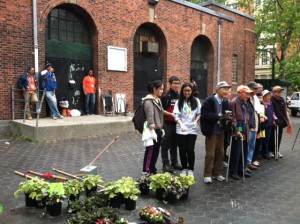



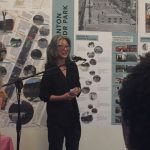












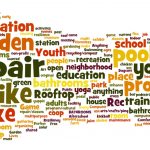

























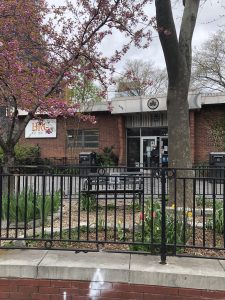



 On April 19, 2021 New Yorkers for Parks and the Play Fair Coalition hosted a conversation with New York City Mayoral Candidates about the future of NYC parks and open spaces and what policies need to be created for a 21st century, equitable system.
On April 19, 2021 New Yorkers for Parks and the Play Fair Coalition hosted a conversation with New York City Mayoral Candidates about the future of NYC parks and open spaces and what policies need to be created for a 21st century, equitable system.

